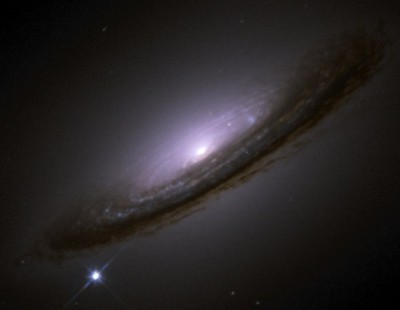5 March 2014
Astrophysics fans will be treated to a public forum on Type Ia supernovae this month when eminent astrophysicist Dr Christopher Tout visits the Monash Centre for Astrophysics (MoCA).
An expert on the evolution of stars and interacting binary stars, Dr Tout, of Cambridge University, will discuss the latest research surrounding the brightest objects in our universe – Type Ia supernovae – in the first of MoCA’s public forums for the year.
Born in Billericay, Essex, England, Dr Tout studied Natural Sciences and Mathematics as an undergraduate at Emmanuel College, University of Cambridge, where he went on to a PhD on Binary Stars and Mass Loss at the Institute of Astronomy.
Dr Tout then spent two years as a NATO Fellow at Lick Observatory in California before returning to Cambridge as a research Fellow at Sidney Sussex College. Since 2000, he has been a Fellow of Churchill College, Cambridge where he is now Director of Studies in Applied Mathematics and the John Couch Adams Astronomer.
According to Dr Tout, Type Ia supernovae are some of the brightest objects in the universe, meaning we can see them in very distant galaxies. This, combined with the fact that they are all very similar, means they can be used to determined distances to those galaxies.
His presentation will focus on current research and will debate whether the Type Ia supernovae can be trusted as cosmological rulers.
“Through the careful observation of the Type Ia supernovae and their apparent brightness, we have learnt that the Universe is not only expanding but accelerating as it does so," Dr Tout said.
“The Nobel Prize for Physics was awarded for this finding last year. However, their true nature remains elusive.”
According to Dr Tout, everything points to ‘white dwarfs’ that explode close to their maximum mass.
“We are faced with the question of how white dwarfs grow. The simplest way is to give them a binary companion so close that material at its surface can be sucked off by the white dwarf. We know that such close binary stars exist but all seem to have insurmountable difficulties when it comes to growing the white dwarf to a high enough mass.”
MoCA Research Fellow Dr Simon Campbell said the year’s first public forum was sure to provide an interesting insight into binary stars with a wonderful opportunity to discuss the questions surrounding the existence of Type Ia supernovae.
“Dr Tout is an eminent stellar astrophysicist and we are very fortunate to have him delivering our first public forum for the year,” Dr Campbell said.
“I encourage anyone with an interest in binary stars, and astrophysics in general to get along to this free event.”
According to Dr Campbell, this is not Dr Tout’s first visit to the University, having spent eight months at Monash following a Science and Engineering Research Council Advanced Fellowship.
“Notably, Dr Tout has spent time at the Space Telescope Science Institute in Baltimore and the Konkoly Observatory in Budapest,” Dr Campbell said.
Dr Tout will take questions from the audience following his presentation.
The forum will be held on Wednesday 12 March from 8pm at Lecture Theatre S3, Monash University, Clayton Campus. No registrations necessary.
For more information, visit the Monash Centre for Astrophysics website













